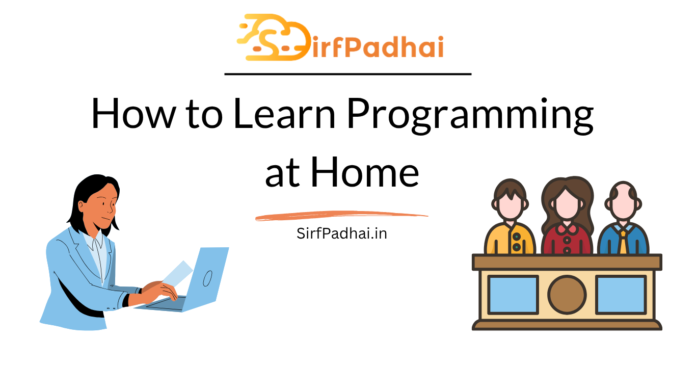How to Learn Programming at Home
In today’s digital age, learning programming at home is more accessible than ever. Whether you’re starting from scratch, planning a career switch, or exploring coding as a hobby, the resources and tools available today make it completely possible to master programming from the comfort of your home.
This guide walks you through practical steps to start learning programming at home—without spending a fortune.
Why You Should Learn Programming
Learning how to code can help you:
- Land high-paying tech jobs
- Work remotely or freelance
- Build your own apps, tools, or websites
- Improve problem-solving and logical thinking skills
Step-by-Step: How to Learn Programming at Home
1. Pick the Right Language to Start
Choosing the right programming language depends on your goals:
- Python – Great for beginners, and widely used in data science, automation, and web development.
- JavaScript – Best for web development (front-end and full-stack).
- Java – Strongly used in Android development and enterprise software.
- C/C++ – Perfect for understanding core computer science concepts.
If you’re not sure where to begin, Python is the most beginner-friendly option.
2. Use Free & Reliable Learning Platforms
Many excellent platforms offer free tutorials, exercises, and project-based learning:
- freeCodeCamp – Learn to code while earning certifications.
- SirfPadhai.in – A great resource for beginners with simple, step-by-step guides on Hindi and English, both programming languages, coding basics, and tech blogs.
- GeeksforGeeks – Perfect for learning data structures and algorithms.
- W3Schools – A rigorous but rewarding introduction to computer science.
These sites offer a mix of theory, hands-on coding practice, and real-world examples.
3. Set Up Your Environment
Install a code editor and set up your workspace:
- VS Code – A highly customizable code editor.
- Sublime Text – Lightweight and user-friendly.
- PyCharm – Great for Python projects.
Also, create a GitHub account and learn basic Git commands for version control.
4. Practice With Real Projects
Apply what you learn by creating mini projects:
- Personal website
- Weather app using an API
- Calculator or to-do list app
- Simple game (e.g., Snake or Tic Tac Toe)
Real-world projects help reinforce coding logic and build a strong portfolio.
5. Solve Coding Challenges
Practice regularly with platforms like:
These platforms improve your coding and problem-solving skills through real-world problems and gamified learning.
6. Join Online Coding Communities
Surround yourself with other learners. Join:
- Reddit communities (e.g., r/learnprogramming)
- Discord programming servers
- Stack Overflow
- LinkedIn tech groups
Engaging with communities can keep you motivated and help when you’re stuck.
7. Follow a Learning Roadmap
Having a structured path keeps you on track. Example:
Web Development Roadmap:
- HTML, CSS, JavaScript
- Git & GitHub
- JavaScript frameworks (React, Vue)
- Backend (Node.js, Express)
- Databases (MongoDB, MySQL)
- Hosting & Deployment (Netlify, Vercel)
8. Take Online Courses
Free and paid platforms offer quality courses:
- Udemy
- Coursera
- edX
- SirfPadhai.in – Offers easy-to-understand blogs and tutorials, especially in Hindi for native learners.
Look for beginner-friendly courses with real-world projects.
Final Tips for Learning Coding at Home
- Be consistent: Practice coding every day—even 30 minutes helps.
- Stay curious: Learn how things work, not just copy-paste.
- Build a portfolio: Showcase your projects on GitHub or your own site.
- Never give up: Debugging is tough, but it’s how you grow.
Conclusion
Learning programming from home is completely doable—whether you want to be a web developer, app creator, data scientist, or ethical hacker. You just need the right mindset, reliable resources, and regular practice.
Begin your journey today with free tools like freeCodeCamp or explore beginner-friendly articles on SirfPadhai.in to get started.






